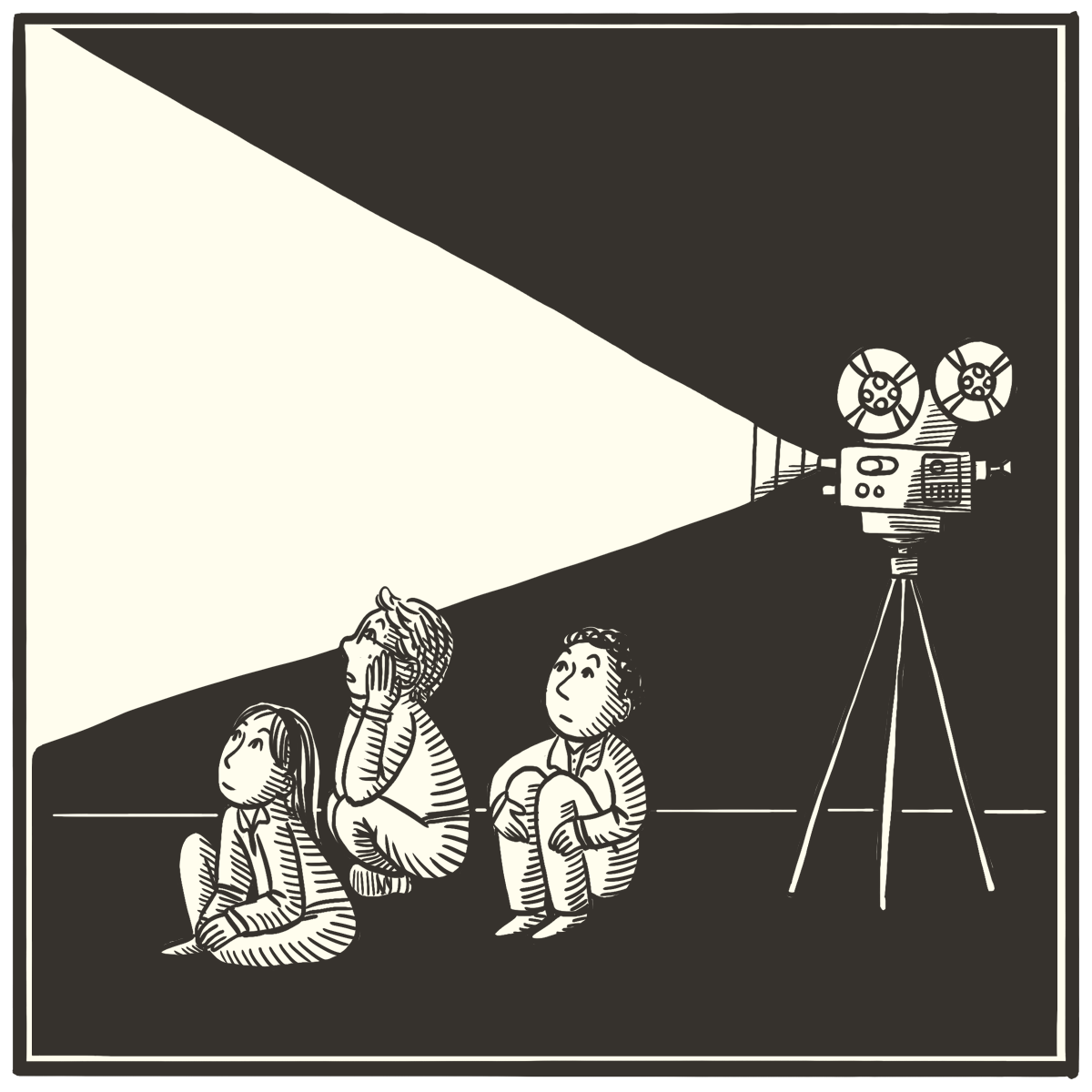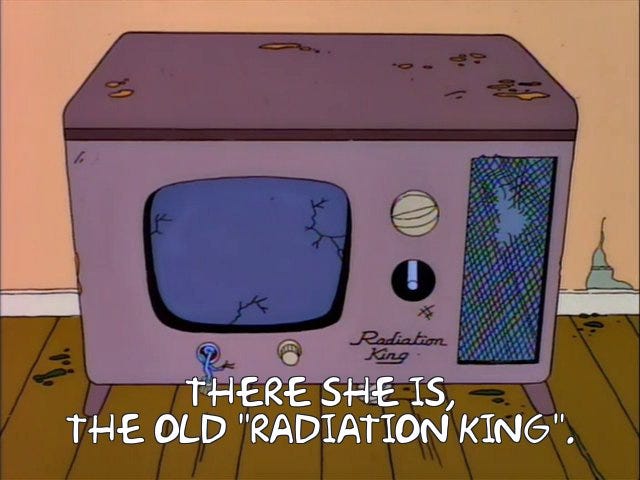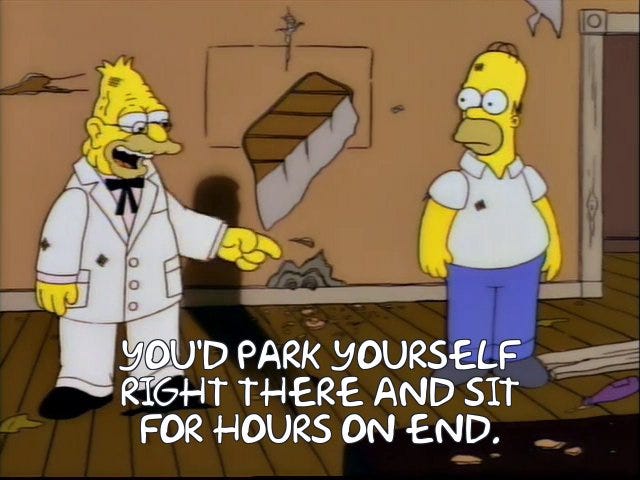
1. A problem
It’s hard to commandeer people’s emotions, cognition, and memories.
Meanwhile, millions of dollars are spent to get hundreds of people to work for thousands of hours to do just that: we call it “a movie”. But in most schools, movies are mostly just what the substitute falls back on when a teacher’s out sick.
2. Basic plan
Once a month, watch a great movie together — as a whole household, a whole grade, or a whole school. Choose movies that
the kids will enjoy
the faculty/parents find meaningful, and
deal with some topic being explored in an academic subject.
Afterwards, refer back to the movie regularly — tie it into the rest of learning.
3. What you might see
Kindergarteners watching The Red Balloon. Second graders watching My Neighbor Totoro. Fourth graders watching Hugo. Sixth graders watching Wonder. Eighth graders watching Hidden Figures. Tenth graders watching The Truman Show. Twelfth graders watching The Matrix.
4. Why?
A great movie is powerful in exactly the way an Egan education tries to be: it yokes thinking to feeling, pulling the audience out1 into a world that they’ll never be able to personally experience.
And tragically it’s precisely because it’s so powerful that people too often consider a movie “unserious” for schools — it doesn’t immediately seem to demand anything of the student or teacher.
This is, of course, missing the point: what they give isn’t rigor, it’s richness.
5. Egan’s insight
Where do we see this in the human experience?
Films are pretty new, but we’ve been leaning on narrative visual storytelling to help us think for a while now.
In ancient Athens, Sophocles’ Oedipus Rex helped ancient Athenians think about fate and free will. In medieval Germany, Everyman prompted peasants to ponder the afterlife and moral choices. In Elizabethan England, Hamlet dissected the morality of duty, honor, and suicide.2 On the eve of the French Revolution, The Marriage of Figaro examined aristocrats’ willingness to abuse their ancestral rights — especially as they pertained to sex.
How might this build different kinds of understanding?
Though a movie is technically an audio-visual thing, it viscerally engages our 🤸♀️EMOTIONS. Even children’s films are 🦹♂️COMPLEX STORIES that work on 🧙♂️BINARY OPPOSITES.
A good movie isn’t just to for us to watch, but to 👩🔬DISSECT and to serve as fodder for 👩🔬IDEA BATTLES. Critical analysis of films encourages clearer thinking about social norms and individual behavior. And many excellent films don’t end with a simple moral conclusion — they force us into the IRONIC (😏) work of avoiding easy dogmatism. (What do these weird emoji mean?)
6. This might be especially useful for…
People prone to cheap moralism about human situations they themselves haven’t experienced.
7. Critical questions
Q: Admit it: this is just an excuse for teachers to take a couple hours off.
And that would be terrible, because…?
More seriously: this is a way to help rocket teachers and students to deeper conversations than they would otherwise be able to have. It’s a way to lock into students’ minds human scenes they can reflect on for the rest of their lives.
Q: You mean teachers should pick educational films, right?
DO NOT WATCH “EDUCATIONAL FILMS”. Watch real films, human films — ones that are beautiful and thought-provoking enough for an adult, but also kid-friendly.
Q: Gotcha — and then give a quiz on the plot afterwards, right?
DO NOT GIVE A QUIZ AFTERWARDS. (That this is a warning we should spell out is really a testament to schooling’s ability to pervert even the simplest ideas.)
Q: But then how can we avoid just having people watch the films passively?
Egan points out that “passive” and “active” is actually a pretty crappy way to make sense of human engagement:
What does it mean to distinguish forms of learning as active and passive? Well, at one level we all know: they are terms used to distinguish lifeless, inert, boring practices from their opposite. But why “active” and “passive”? Is that child sitting and reading active or passive? Is the child imaginatively transported by a story the teacher is telling active or passive?
Q: Oh, come on, we all know what those words refer to. What’s the harm?
Yeah, Egan saw you coming! He continues:
….As a casual way of distinguishing kinds of learning this may be fine. But look what tends to happen when such terms are used year after year, decade after decade. Instead of being understood as more or less vague indicators of a desirable feature of students’ learning in a complex set of educational ideas… these terms become increasingly understood as indicating features of particular practices… and because we can see physical engagement better than intellectual, there is a tendency to move increasingly in that direction. So we get all that “hands-on” activity that… has done so much to trivialize early education.
Kieran Egan, Getting It Wrong from the Beginning, pp. 66–67
Q: Fancy words — now allay my fears that this is just wasted hours.
If you pick films that are meaningful to you, assume the time is well spent, even if you don’t “do” anything with them.
And then do things with them. Name the choices characters faced. Replay scenes later, when something new you’re learning reminds you of them. Use them as fuel for writing exercises.
Not convinced? Suspect that watching movies in class is the primrose path to being rejected by the Ivy League? Frankly, WE WOULD LIKE TO FIGHT YOU HEAR ABOUT IT. Become a subscriber and join in the comments conversation.
8. Physical space
At home
Look: your TV is fine. Your speakers are fine. Compared to anything you purchased in the last twenty years, the A/V equipment we all grew up on looked like this:
And did this:
You may, however, want to purchase the films, so you can rewatch them later. (If you stream them, you might also want to keep a list of which service each film can be found on, so that when, months or years later, you don’t have to go looking through Apple and Netflix and Redbox and Prime and… before you finally give up and chuck your remote at the TV.)
In a classroom
Even a mid-price projector can be made pretty professional if you can just block out most of the sunlight — and “black-out curtains” are fairly cheap at Target. It’s more important to make this special by getting kids out of their seats — carpet squares are the classic solution, and you might be able to get a donation from a local store.
9. Who else is doing this?
In writing this pattern, I was a little influenced by my memories of reading The Film Club, a movie about a movie-critic dad who let his son drop out of high school, on the stipulation that he had to watch three films a week of the dad’s choosing, and talk about them.
Other than that, lots of schools have kids watch movies occasionally — but they’re too often chosen fairly randomly (and given as “treats”). What I’m suggesting here is that these be moved nearer to the heart of the curriculum.
How might we start small, now?
In the comments, share a favorite movie you’d like to recommend to other families, and why you love it.
10. Related patterns
This is parallel to the sprinkling of other forms of art we have — A Song a Week°, A Poem a Week°, and A Painting a Week°. (Maybe we should call these “the great art sprinkles”? Ohmygosh that sounds DELICIOUS.)
Unlike those, however, movies can be fuel for understanding how compelling stories work — and so strengthen Story Ingredients°, Playing inside Stories°, and Narrative Theory°.
Afterword:
I’ll make some sort of general announcement about this later, but if you’re the kind of person who reads to the very of these, you get a treat —
I think you can see how excited this is making me, at least…
Literally e-duc-ating
Heck, Harold Bloom argued that Hamlet literally INVENTED the modern human psyche. Overblown, yes — but big things are going on in that play.






Thanks for this Brandon, I think you (and Egan) are right here. School needs more movies! I've gotten a lot of value out of showing films to my middle schoolers. But as a person who doesn't watch a lot of movies myself, I have in the past leaned towards documentaries or 'educational' type films. I would love to see a longer list put together by people who know about movies and understand how they could be used in this way. I have bookmarked the film 'Wonder' that you mentioned to show to my 6th graders!
My husband and I have been recently watching beloved 80s movies with our kids, in part because we love those movies but also because it leads to all sorts of interesting conversations about what things were like "way back in the olden days" when my husband and I were kids (or at least that's how our kids think of it!)